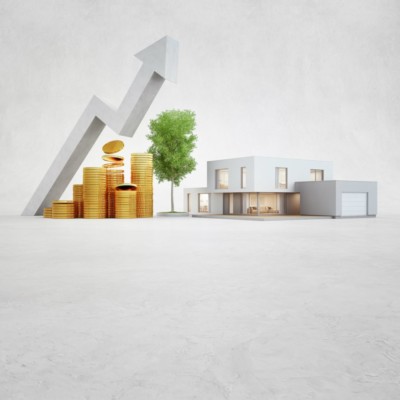Increase in housing starts will fuel ready-mixed concrete production through 2020.

In my last column, I cheered the news that homeowners’ equity in America’s inventory of owned residences hit an absolute, all-time high. And more importantly, I explained how this new record bolsters consumer sentiment, and therefore adds momentum to the overall economy. And now, yet another indicator was released in recent days that confirms this strength in the housing market: total housing starts increased in May, with gains in both the single-family and multifamily sectors, and starts increased 5% month-over-month to a 1.35 million seasonally adjusted annual rate. The biggest news, however, was this pace is at the post-recession high.
While we are a long way from the 2.2 million-unit housing starts number that marked the pre-recession high, we have to remember that number was artificially inflated by the amount of sub-prime mortgage money that was flowing into the economy, fueling growth in home ownership to unprecedented and unsustainable levels. Most housing economists will generally agree that 1.6 million starts has been the average for the homebuilding industry since 1960, but that can fluctuate depending on how individual economists view the data.
The rate of single-family starts was 3.9% higher in May, reaching a 936,000 annual rate, and these recent growth trends for single-family starts match ongoing healthy levels of the NAHB/Wells Fargo Housing Market Index, also known as the “HMI”, which is now registering a score of 68. However, builders continue to report concerns about ongoing labor access issues and dramatic price increases for softwood lumber. On a year-to-date basis, single-family starts are 9.8% higher as of May relative to the first five months of 2017, performing better than many economists had forecast.
Further, reports from HUD and the U.S. Census Bureau reveal that multifamily starts (5+ unit production) were up 11% in May to a 404,000 annual rate. Multifamily construction activity has outperformed the forecast so far this year according to the National Association of Homebuilders, which carefully tracks and predicts housing start metrics. While their forecast calls for softer multifamily construction conditions in 2018, on a year-to-date basis, 5+ unit production is up more than 13% compared to this period in 2017. With respect to housing’s economic impact, 54% of homes under construction in May were multifamily, at 612,000 units, and this current count of apartments under construction is roughly unchanged over the last year.
But once again, sentiment translates into a driver behind our economy, and while consumer confidence remains high, builders nevertheless became queasy earlier this month. According to the HMI, builder confidence in the market for newly-built single-family homes fell 2 points to 68 in June, due in large part to sharply elevated lumber prices, which have added nearly $9,000 to the price of a new single-family home since January 2017. However, the HMI reported that despite this sticker shock, builder sentiment remains on solid footing.
Improved economic growth, continued job creation and solid housing demand should spur additional single-family construction in the months ahead. However, builders do need access to lumber and other construction materials at reasonable costs in order to provide homes at competitive price points, particularly for the entry-level market where inventory is most needed.
Builders are optimistic about housing market conditions as consumer demand continues to grow. However, builders are increasingly concerned that tariffs placed on Canadian lumber and other imported products are hurting housing affordability. Derived from a monthly survey that NAHB has been conducting for 30 years, the HMI gauges builder perceptions of current single-family home sales and sales expectations for the next six months, and the scoring matrix results in an index where any number over 50 indicates that more builders view conditions as good than poor. All three HMI indexes inched down a single point in June. The index measuring current sales conditions fell to 75, the component gauging expectations in the next six months dropped to 76, and the metric charting buyer traffic edged down to 50. While these numbers reflect a slight softening in builder sentiment, they nevertheless remain optimistic about the near future for the housing market based on the tailwinds blowing against the overall economy.
Increased homeowners’ equity and rising wages continue to fuel positive sentiment, and that results in continuous increases in the total number of housing starts. We predict this trend will continue at least through 2020, so expect this combination of very positive factors to fuel ready-mixed concrete production for the housing market segment of our industry.
About the Author
Pierre G. Villere serves as president and senior managing partner of Allen-Villere Partners, an investment banking firm with a national practice in the construction materials industry that specializes in mergers & acquisitions. He has a career spanning almost five decades, and volunteers his time to educating the industry as a regular columnist in publications and through presentations at numerous industry events. Contact Pierre via email at pvillere@allenvillere.com. Follow him on Twitter – @allenvillere.

